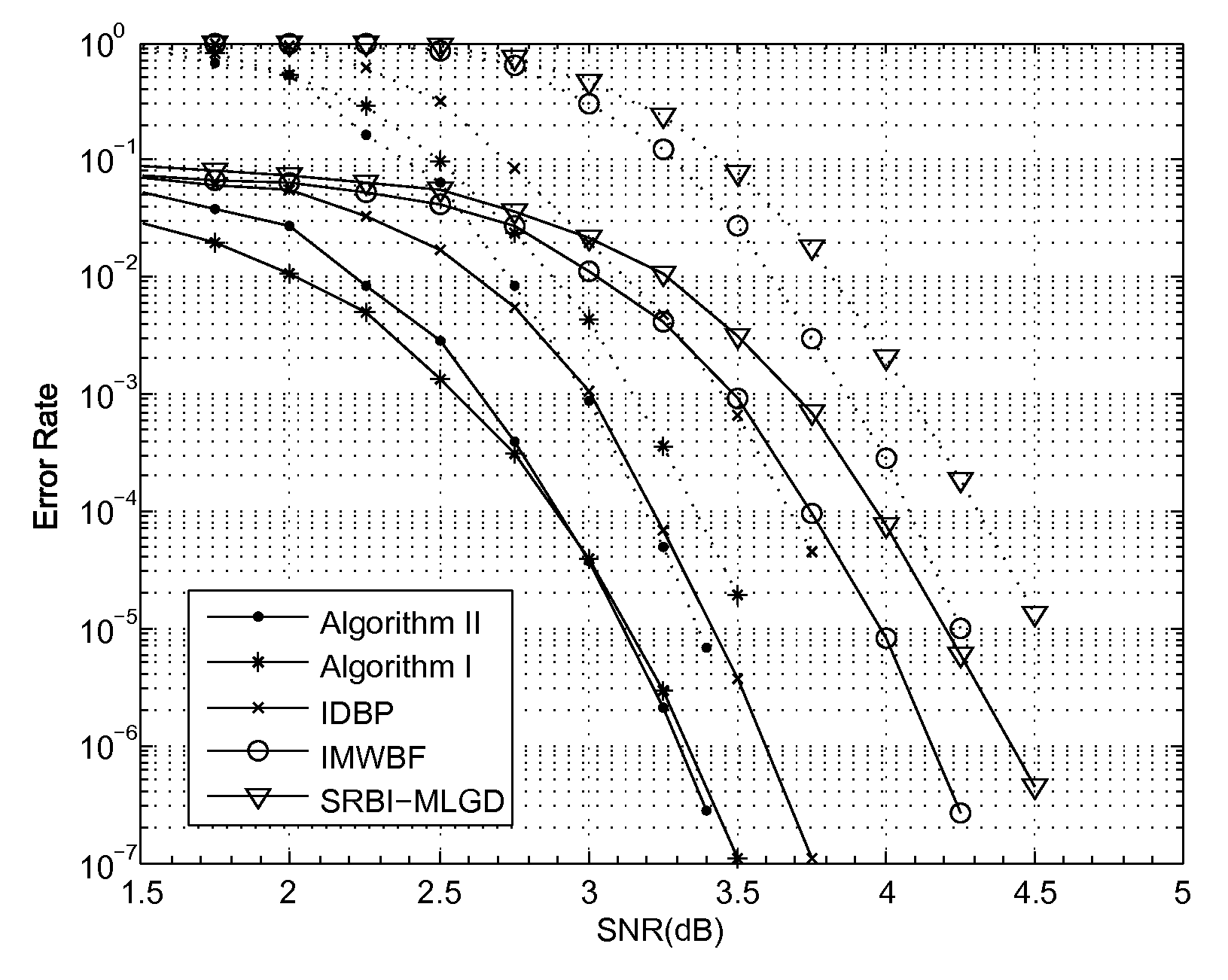Two Low Complexity Decoding Algorithms for LDPC Codes
a low-complexity, ldpc-based technology, applied in the field of error correction codes, can solve the problems of insufficient bit error, insufficient bandwidth, and insufficient bit error, and achieve the effect of improving performance and reducing computational complexity
- Summary
- Abstract
- Description
- Claims
- Application Information
AI Technical Summary
Benefits of technology
Problems solved by technology
Method used
Image
Examples
Embodiment Construction
A. Notation and Basic Definitions
[0045]A binary LDPC code is completely described by its sparse binary parity-check matrix H. For an (N, K) LDPC code, H has N columns and M≧N−K rows. For a regular LDPC code, H has the following structural properties: (i) every row has weight ρ; (ii) every column has weight γ; (iii) no two rows (or two columns) have more than one 1-component in common; and (iv) both ρ and γ are small compared to the length N of the code. The set of bits that participate in check m is denoted as N(m) {n: Hmn=1}. Similarly, the set of checks in which bit n participates is denoted as M(n) {m: Hmn=1}.
[0046]Suppose a binary (N, K) LDPC code is used for error control over a binary-input additive white Gaussian noise (BIAWGN) channel with zero mean and power spectral density N0 / 2. Assume binary phase-shift-keying (BPSK) signaling with unit energy. A codeword c=(c0, c1, . . . , cN−1) ∈ {GF(2)}N is mapped into the bipolar sequence x=(x0, x1, . . . , xN−1) before its transmiss...
PUM
 Login to View More
Login to View More Abstract
Description
Claims
Application Information
 Login to View More
Login to View More - R&D
- Intellectual Property
- Life Sciences
- Materials
- Tech Scout
- Unparalleled Data Quality
- Higher Quality Content
- 60% Fewer Hallucinations
Browse by: Latest US Patents, China's latest patents, Technical Efficacy Thesaurus, Application Domain, Technology Topic, Popular Technical Reports.
© 2025 PatSnap. All rights reserved.Legal|Privacy policy|Modern Slavery Act Transparency Statement|Sitemap|About US| Contact US: help@patsnap.com



